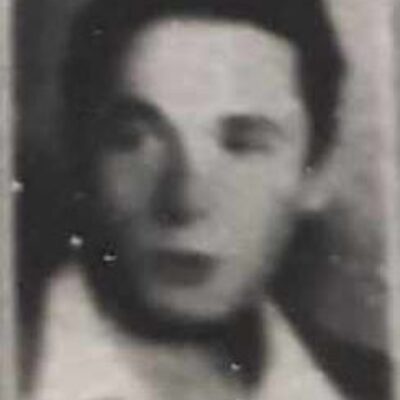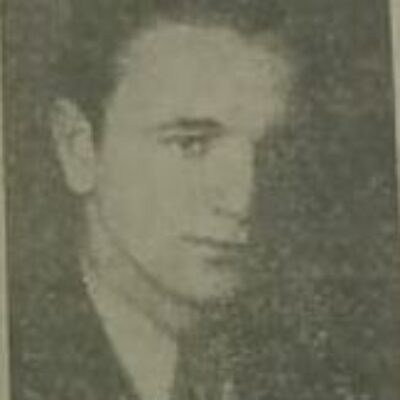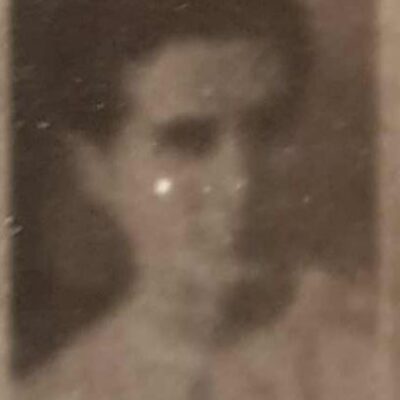Dragi S. ĆIŠIĆ
DRAGI ĆIŠIĆ, son of SALIH, born on October 2, 1922, in Mostar. Medical student. Member of the Communist Youth League […]
Mostar Battalion was formed as the “Konjički” in September 1941. Until the formation of the 13th Herzegovina Brigade in May 1944, 827 fighters passed through the Battalion, and 445 of them perished, including 211 from Mostar. Of the 86 women, 43 were killed. Mostar residents also fought in many other units of the NOVJ (People’s Liberation Army of Yugoslavia) and among the ranks of the activists of the National Liberation War in Mostar and other cities in Bosnia and Herzegovina… According to the records of the organization SUBNOR Mostar, every third citizen was an activist of the National Liberation War, 670 fighters were killed, 1517 were victims of fascist terror, and 206 were civilian war victims. Džemil Šarac, article “Sa Mostarcima” (“With the People from Mostar”), Hercegovina No. 9, p. 221.
“And we were all young. Those of us who were 17, 18 years old, some seemed old even though they were not older than 25. The ones over 30 were rare. There were girls and boys with different characteristics and temperaments, robust and calm, talkative and silent, recklessly brave and rational, ordinary and above-average, semi-literate and university-educated, workers and highly skilled craftsmen, high school students and university students, skilled singers and those who couldn’t carry a tune, jokers and serious-minded individuals. From all our nations and religions: Muslims, Croats, Serbs, Jews, Orthodox Christians, Catholics, Muslims, Jews, atheists, and semi-atheists. Some were from straight from Mostar and others from the surrounding locations, from Konjic and outside Konjic.” (Hercegovina Magazine No. 7, p. 238)
Groups of new fighters arrived from Mostar every 10-15 days, and the Unit quickly grew into a solid military force. The guides for the groups from Mostar were Mehmed Arap, Vasa Maslo, Serif Burić, Husa Orman, Vojo Ivanišević, and Pero Krajina, who were among the bravest and most resourceful fighters. The groups regularly brought not only weapons but also medical supplies, sugar for the hospital, writing materials, large quantities of paper, books taken from the National Library (which formed the library at Borci), and other supplies for the needs of the Unit. (Source: https://www.cidom.org/wp-content/uploads/2017/11/Hercegovina-u-NOB-1.pdf)
After the war, a street in Mostar was named after the Mostar Battalion.

DRAGI ĆIŠIĆ, son of SALIH, born on October 2, 1922, in Mostar. Medical student. Member of the Communist Youth League […]

ALIJA ALE ĆIŠIĆ, son of SULEJMAN, born on August 17, 1920, in Mostar, a machine fitter, player of FC “Velež” […]

RADOMIR ĆURKOVIĆ, son of NIKOLA, born on June 1, 1925, in Jajce, student at Mostar Gymnasium, where he lived with […]

RAPHAILO RAFAEL RAFA DANON, known as ADMIRAL TOGO, son of ZADIK*, born on October 15, 1912* in Mostar, as one […]

DŽEMAL DELIĆ, son of SALKO, born on December 8, 1920* in Mostar, a locksmith by profession, and a member of […]

MUZAFER DERONJA, son of HUSEIN, born on June 22, 1924, in Mostar, carpenter, member of SKOJ since 1941. Joined the […]

ŠEFKIJA DERVIŠKADIĆ, son of ARIF, born on January 4, 1922, in Nevesinje. He received education and worked in Sarajevo. A […]

AFAN DIZDAR, son of SALIH SALKO born on April 25, 1922, in Mostar, a locksmith and a member of the […]

IBRAHIM IBRO DIZDAREVIĆ, son of JUSUF, born on July 17, 1923, in Mostar, an electrician, a member of the League […]

HAMDIJA S. DIZDAREVIĆ, born in Mostar, worker. He survived the Fifth Offensive and the Battle of Sutjeska, and along with […]